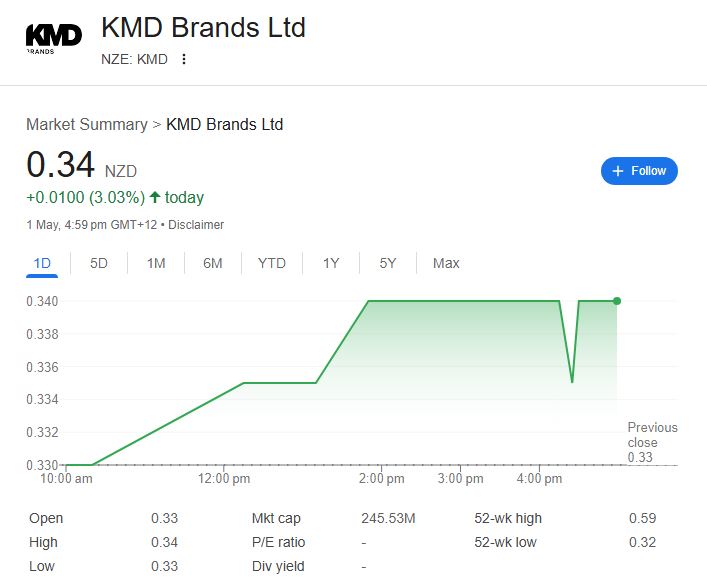
Though there have been some bright spots, the Kathmandu share price has been cloudy in recent quarters. This New Zealand-based outdoor lifestyle conglomerate, which is listed under the KMD Brands umbrella, has experienced cyclical headwinds that would make even the most seasoned investors uneasy. However, a business model that is remarkably resilient can be found beneath the market noise, particularly in an era characterized by digital acceleration and consumers who are concerned about sustainability.
KMD Brands is trying to find a way back to growth by implementing digital-first strategies and optimizing its retail operations. Even though the share price is currently trading at about NZ$0.34, which is significantly lower than its 52-week peak of NZ$0.59, the company has made significant progress in improving its direct-to-consumer engagement, which is indicative of a larger shift towards omnichannel retailing. For Rip Curl and Oboz, two of its flagship brands that continue to garner significant worldwide recognition, the change has been especially advantageous in recent months.
| Attribute | Details |
|---|---|
| Company Name | KMD Brands Limited (formerly Kathmandu Holdings Limited) |
| Ticker Symbol | NZE: KMD |
| Headquarters | Christchurch, New Zealand |
| Founded | 1987 |
| CEO | Michael Daly (since May 19, 2021) |
| Brands | Kathmandu, Rip Curl, Oboz |
| Employees | Approximately 2,479 (as of 2024) |
| Market Capitalization | NZ$245.53 million |
| Recent Share Price | NZ$0.34 (as of May 1, 2025) |
| 52-Week Range | NZ$0.32 – NZ$0.59 |
| Revenue (FY2024) | NZ$979.4 million |
| Net Income (1H FY2025) | NZ$-20.7 million |
| Gross Margin (1H FY2025) | 58.5% |
| Official Website | kmdbrands.com |
The difficulties KMD faces are remarkably similar to those faced by other clothing manufacturers in the context of global retail disruption. Consumer foot traffic has shifted to digital storefronts, inventory cycles have lengthened, and profit margins have become more competitive. However, KMD’s choice to focus even more on product innovation and brand-led storytelling may work remarkably well to regain investor trust.
Demand for practical yet fashionable equipment was sparked by the unexpected collision between remote work and outdoor escapism during the pandemic. KMD Brands took advantage of this by growing its outdoor and surf-focused collections, which has increased brand awareness and provided access to new markets. Customers have hailed the Oboz line in particular as being exceptionally adaptable for traversing both urban trails and far-flung hikes.
KMD’s share price offers a window of opportunity even though it might also reflect short-term investor uncertainty. Nearly 45% of the company’s shares are owned by institutions, indicating that key stakeholders are still hopeful about the company’s long-term performance. This faith could be a helpful indicator for retail participants and early-stage investors.
KMD has started to revolutionize supply chain efficiency by utilizing advanced analytics, which has the potential to drastically lower costs and enhance responsiveness. Instead of reducing innovation, the company has reassessed its market strategies and streamlined operations in response to the recent decline in net income. These indicate recalibration rather than retreat.
KMD’s core value proposition looks especially innovative in the upcoming years as the outdoor lifestyle market continues to expand, driven by environmentally conscious Gen Z consumers and more mobile Millennials. A business philosophy that embraces change rather than fights it is reflected in the brand’s environmental initiatives and its push for circular design models.
The story of Kathmandu is far from over, for those who watch the ASX or NZX boards. It might even be on the verge of a fascinating new era, one in which agile innovation, brand authenticity, and practical leadership could help it move from recovery to rebirth.
